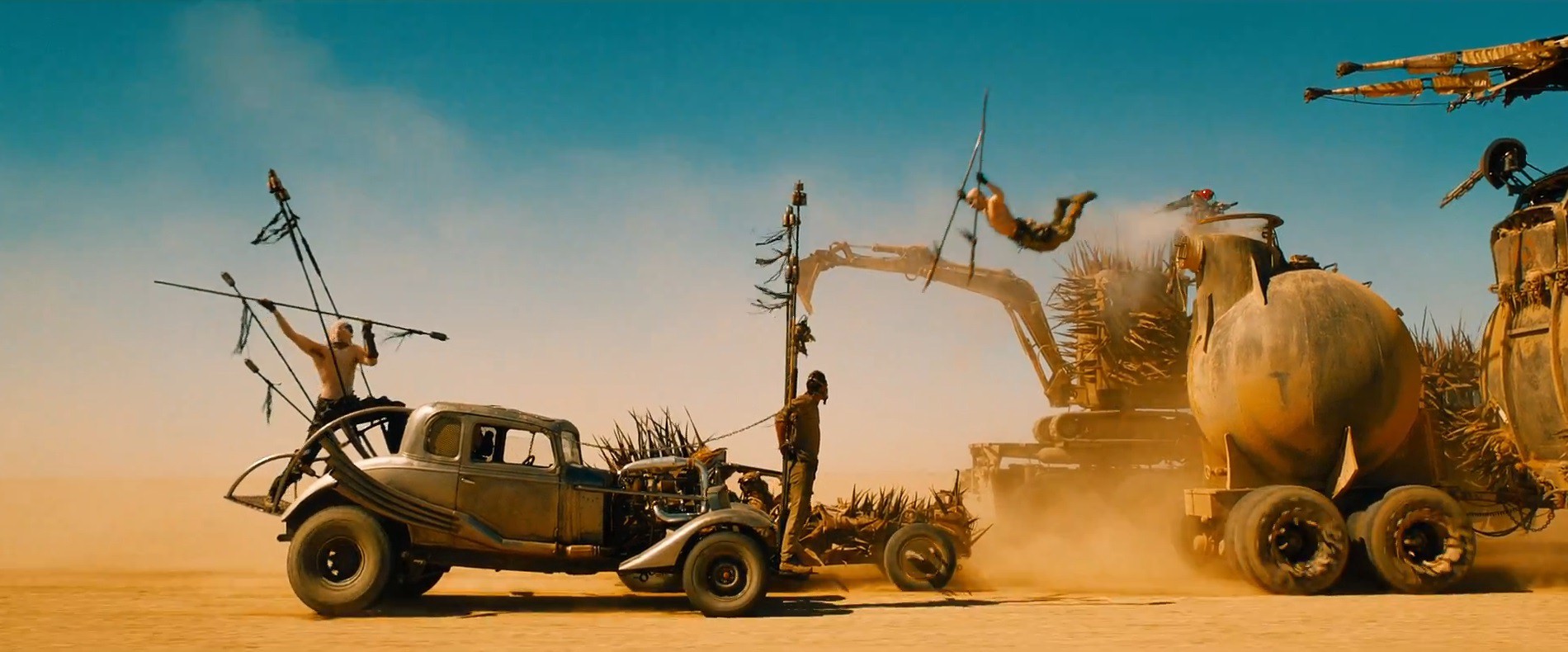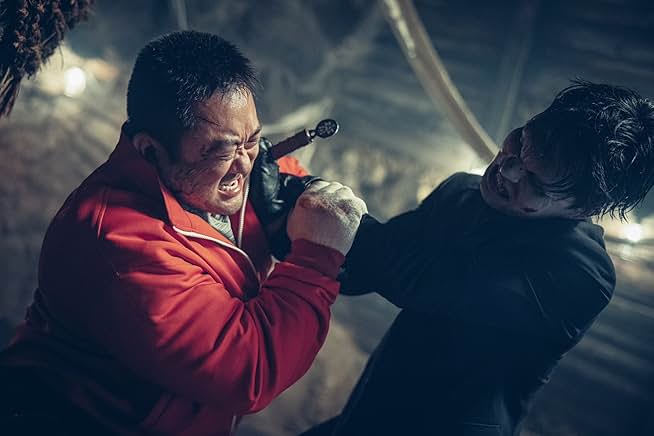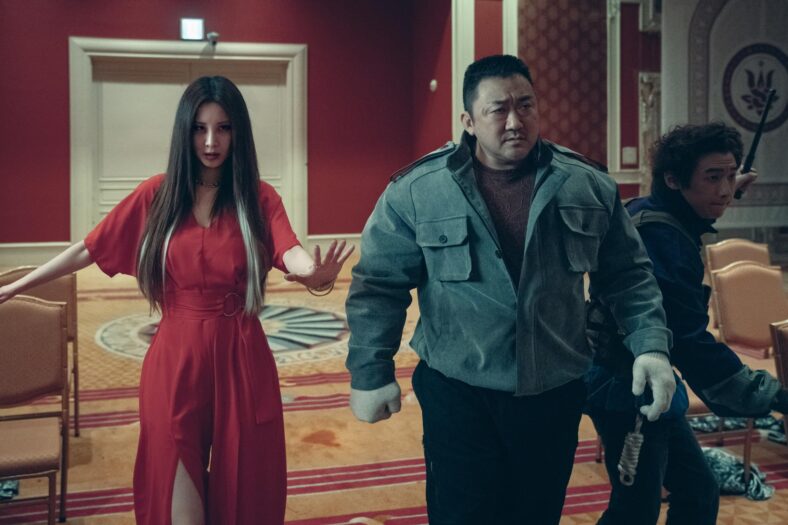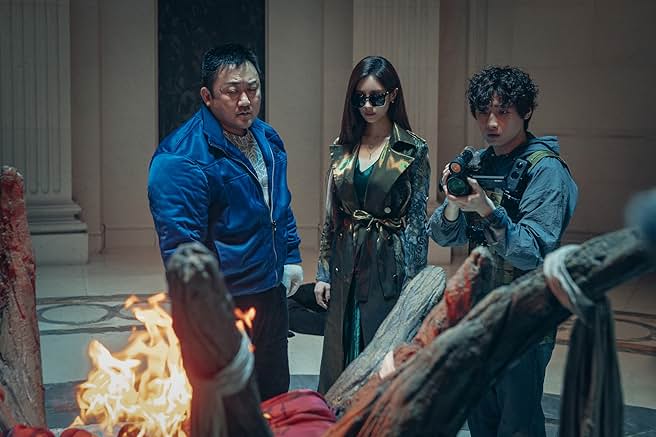Movie Reviews
Rob’s Car Movie Review: Double Nickels (1977)

From the 1980s through to today, the majority of car movies tend to be comfortably budgeted and widely released productions from major studios or distribution entities. Films like The Cannonball Run, Need for Speed, John Wick, and Ford v. Ferrari relied on big-money stars and massive advertising campaigns to spread awareness of the movie and bring in those box office dollars.
In the 1970s, however, the opposite was more commonly true.
Low-budget films produced through the efforts of independent companies were churned out by the dozen, often aimed at the drive-in movie crowd. They usually relied on an easy-to-digest high concept, rarely featured an actor you had ever heard of, and were less than stellar in terms of storytelling and technical proficiency. Falling into this category were such pictures as Bobby Jo and the Outlaw, Moonshine County Express, King of the Mountain, and Van Nuys Blvd.
While I have watched a number of these types of movies in the past, one that I had never heard of before recently came to my attention, and I thought for this month’s episode of Rob’s Car Movie Review, I’d give it a review.
So, without further delay, I present to you Double Nickels (1977)!
The theatrical, one-sheet movie poster for Double Nickels. (Image courtesy of Smokey Productions.)
Double Nickels was produced and distributed in the United States by Smokey Productions. Having worked on H.B. Halicki’s prior low-budget movies, the original 1974 version of Gone in 60 Seconds and he Junkman, a relative unknown, Jack Vacek, took it upon himself to try his hand at being an auteur filmmaker. He wrote, directed, produced, edited, acted, and performed stunts in the picture.
Performing alongside of Vacek was an ensemble of totally unknown actors, including Trice Schubert, Edward Abrahms, Heidi Schubert, George Cole, Tex Taylor, and Mick Brennan.
Shot in my current place of residence, Malibu, California, and other locations in the Los Angeles area on a micro-budget of $150,000, Double Nickels tells the story of a pair of California Highway Patrolmen, Smokey (Vacek) and Ed (Abrahms), who monitor a strip of the US1 Pacific Coast Highway.

Jack Vacek as the main protagonist, California Highway Patrolman, Smokey. (Photo courtesy of Smokey Productions.)
A chance encounter with a speeder, George (Cole) who purports to be in the auto repossession business, leads Smokey and Ed to moonlight for George, ostensibly taking back sports and luxury cars that the owners have failed to make payments on.
The two lawmen prove highly adept at boosting cars, successfully outwitting the owners, and on a couple of occasions, the police, whom they must stay clear of, since moonlighting is against Highway Patrol policy.
All is going well as the two rake in the extra dollars to supplement their Highway Patrol paychecks, until Smokey and Ed discover that the cars they have been reclaiming were not, in fact, being financed by any financial institution. They confront George with this information, who promises to question the man who has been bankrolling his repossession business.

Edward Abrahms as Highway Patrolman, Ed. (Photo courtesy of Smokey Productions.)
George delivers a car personally to his backer, Lewis Sloan (Taylor), and queries the man about the nature of his business. Sloan, in a not-so-veiled threat, tells George to mind his own business, prompting George to tell Smokey and Ed that he believes they have all unwittingly gotten themselves mixed up in an auto theft ring.
Realizing their jobs and their very freedom is in Jeopardy, Smokey, Ed, and George go to Sloan’s home and take back one of the cars they had previously boosted. Subsequently, a high-speed pursuit develops between our protagonists and Sloan, setting up a climactic final act that will decide who prevails.
Double Nickels is perhaps the quintessential 1970s B-movie, as it contains all the aforementioned technical deficiencies of the species and much more.

George the repo man, portrayed by George Cole. (Photo courtesy of Smokey Productions.)
For starters, to my eye, the film was likely shot on Super-16mm and blown up to 35mm for distribution to reduce film stock costs. As a result, the movie is left with a squarish aspect-ratio and huge globs of grain in the image. The version I watched was probably transferred from a very old print that had color-shifted over the years, as the color palate leans heavily towards magenta. I actually didn’t mind this so much, as it lends the film a seedy, 1970s look that films like Boogie Nights strived to recreate decades later.
The other technical aspects, such as the live sound recordings and editing, are also quite poor. Sometimes, you simply cannot hear the dialogue or follow the action. Sloppy jump cuts and abrupt scene exits are scattered throughout.
As was the case in the previously mentioned 1974 incarnation of Gone in 60 Seconds, the acting is pretty much abysmal, with the often laughable and ludicrous written words from the screenplay not doing the thespians any favors.

Tex Taylor as auto theft kingpin, Lewis Sloan. (Photo courtesy of Smokey Productions.)
Likewise, the story itself is nothing to write home about, either. The idea that a pair of cops could not see what they were getting themselves into with the repossession scheme is fairly ridiculous and fails to suspend disbelief. The tone of the story also shifts incongruously from drama to over-the-top slapstick comedy at times.
Having just trashed the film, you might find it incredible that I managed to enjoy it to a degree.
The movie’s running time is a mere 88 minutes, so it doesn’t represent a major ask for your time. On a personal level, it was fun for me to see how Malibu’s scenery and landmarks had changed over the decades before I moved here.

The movie aptly captures the halcyon lifestyle of 1970s Southern California. (Photo courtesy of Smokey Productions.)
The movie also acts as a snapshot of 1970s Southern California in the laconic, beach-and-sun-and-chicks-in-bikinis lifestyle that it presents. Hillarious and kitschy are the hairstyles, mustaches, and wide-lapeled, open shirts and bell-bottomed jeans throughout. Gen-Xers like me just love that stuff as it reminds us of our childhoods.
What’s more, the movie delivers in spades in terms of the automotive action.
While we are not presented with multitudes of raucous, high-end muscle cars from the era, likely because the film’s miniscule budget didn’t permit procuring them, we are treated to a few icons of the period.

Smokey drives this awesome 1968 Chevy Chevelle SS in the film’s climactic chase sequence. (Photo courtesy of Smokey Productions.)
The two best cars are the ones that are used in the 17-minute car chase that ends the movie: a 1968 Chevy Chevelle SS and a ‘73 Chevrolet Corvette C3.
The Chevelle, driven by Smokey, is unusual in that it is painted in code MM Burnished Saddle Metallic, a rare medium brown color, with white over-the-top stripes. It features aftermarket mag wheels, a black interior, and, as we see multiple times, is equipped with a manual transmission, which Smokey aggressively rows.
The C3 is driven by Sloan, who consistently chomps on a cigar while sawing at the steering wheel, with his henchman in the passenger seat occasionally leaning out of the window to fire off rounds at Smokey’s car with his .45.

Lewis Sloan uses this Bright Orange ’73 Corvette to pursue Smokey. (Photo courtesy of Smokey Productions.)
The ‘Vette looks fantastic in code 86 Bright Orange with a black interior, and is an automatic transmission car. Sadly, we never get a look under the hood of either car, but do hear their V8s roar throughout the spectacular pursuit.
Another car that features prominently in the film is Smokey’s dilapidated 1957 Chevrolet Task-Force 3100 series pick-up.

Smokey’s 1957 Chevrolet Task-Force 3100 series pick-up is used in a chase sequence in the Los Angeles River. (Photo courtesy of Smokey Productions.)
Seemingly ancient and covered in peeling paint and primer, the truck features a manual transmission and is involved in multiple chase sequences, including one in the Los Angeles River.
Other vehicles in the movie include multiple Cadillacs, a wild dune buggy, 1970s-style custom vans, super-cool 1974 Dodge Monaco and ’72 Plymouth Satellite police cars, George’s gorgeous 1977 Mercedes-Benz 450 SEL, a 1966 Lincoln Continental with suicide doors, and Smokey’s 1975 Norton Commando 750 for motorcycle fans.
Though far from being a hot car, I’d be remiss in not mentioning the 1971 Ford Pinto that Ed escapes from the cops in by driving it down several flights of stairs. Quite a stunt!

Even the movie’s police cars, like this 1972 Plymouth Satellite are cool. (Photo courtesy of Smokey Productions.)
If you go into Double Nickels forewarned that it is no Citizen Kane and that it possesses some of the worst technical and storytelling facets of 1970s low-budget filmmaking, it’s not impossible to enjoy the movie.
I tend to liken it to something you might watch if it was the only thing on TV at 3 am or if you were sick in bed. For all its bad acting and implausible plot machinations, it does nostalgically capture a Southern California that once existed and has some enviable cars and superb pursuits in it.
As such, I give Jack Vacek’s magnum opus five out of ten pistons.

Movie Reviews
Classic Film Review: ‘Mad Max: Fury Road’ is a Lesson in Redemption | InSession Film

Director: George Miller
Writers: George Miller, Brendan McCarthy, Nick Lathouris
Stars: Tom Hardy, Charlize Theron, Nicholas Hoult
Synopsis: In a post-apocalyptic wasteland, a woman rebels against a tyrannical ruler in search for her homeland with the aid of a group of female prisoners, a psychotic worshipper and a drifter named Max.
“As the world fell, each of us in our own way was broken. It was hard to know who was more crazy: me, or everyone else.” No better words describe the world of the Wasteland, a place plagued by war and famine and the complete collapse of society. In this world, the rules are clear: there are none. Survivors will do what they must to make it another day, even as fanatics and those establishing power across the Wasteland oppress more and more desperate people just wanting a morsel of what’s left. After an initial look into this destabilization in 1979’s Mad Max and a display of the monstrous nature of humanity, director George Miller expanded the Wasteland across its sequels The Road Warrior and Beyond Thunderdome. Each movie showcased the best and worst of people, and the sickly approaches they would take to see the next day.
In Mad Max: Fury Road, this insidiousness is explored through the warlord Immortan Joe (Hugh Keays-Byrne), who controls the supply of water in the Wasteland and gives very little to the thirsty, starved people below his Citadel. He has established himself as a divine being with a cultish following that hangs on his every word. His brethren, the War Boys, are malnourished and brainwashed men and women who live on ‘blood bags’ (people with enough blood still to ‘donate’ so the War Boys can keep going) and drive in Immortan’s name by worshipping him and honoring their ‘god,’ the V8 engine. When going after enemies and factions that may threaten them, they are willing to give their lives in the Immortan’s name, hoping to be ‘witnessed’ and ride to Valhalla to join the heroes of all time.
Like every movie in the series, this rule is eventually challenged by someone who decides they have had enough. In Fury Road, that’s Furiosa (Charlize Theron), a War Rig driver hauling cargo who decides to drive off-road, with the Immortan realizing quickly that Furiosa is also driving with his harem of wives (Rosie Huntington-Whiteley, Zoe Kravitz, Courtney Eaton, Riley Keough), and gives chase to her with his War Boys, like Nux (Nicholas Hoult), who hope to catch her and find favor in the Immortan’s eyes. And much like his involvement in the previous installments, Max (Tom Hardy) is in the middle of the action, as a blood bag to Nux at first and then driving along with Furiosa looking for a paradise within the ruins of the Wasteland.
All of this leads into one of the best action movies of the 21st century and, by extension, one of the finest ever made, with an ample amount of solid characterization, terrific dialogue that’s endlessly quotable, and phenomenal direction from Miller. Once Furiosa drives the War Rig out of the Citadel limits and towards Gas Town, the movie refuses to relent, even for a second. Powered by Tom Holkenborg’s thunderous score that is even personified in the movie in parts by the thrashing of the Doof Warrior’s flamethrowing guitar, Fury Road moves from one incredible setpiece to the next, from a chase where they battle the Buzzards, a rival faction, to one of the most visually spectacular sandstorms ever put to film, two brilliant canyon runs, and a tense nighttime sequence as the War Rig moves through a swamp. With the combination of John Seale’s incredible cinematography and fantastic visual effects, Fury Road soars as an action spectacle.
Yet throughout it all, the movie never forgets its characters, who are given ample development as the world around them goes to an even lower depth of hell. Everyone is broken, and trying to find some form of redemption and absolution for the things they have witnessed or the mistakes they have made, and wanting to be better people despite the world telling them they can’t. From Max’s tortured psyche due to his past failures to save everyone to Furiosa’s shattered past and lost family waiting to be found, to the wives of the Immortan Joe who find themselves at the precipice of a life with no shackles and futures that aren’t relegated to being child bearers for the warlord, and even Nux, a War Boy realizing his pursuit for Valhalla is more than pleasing a man who cares little for everyone else; the storytelling creates an emotional journey for them that by the time the credits roll, leaves audiences with a new set of favorites in the franchise.

10 years later, it’s no surprise that Mad Max: Fury Road has achieved the status it has in the pantheon of action cinema. A relentless two hours crescendos in a magnificent final chase in the other direction, with some of the finest stunt work and vehicular carnage of the century, giving every character a chance to shine and be a prominent part of the rampage, even incorporating that guitarist on a rig just powering everything with a crew of drummers behind him, and with a fascinating character piece that followed with 2024’s Furiosa: A Mad Max Saga, it creates a picture perfect arc for the character as well. In the end, it rides eternal, shiny and chrome.
Grade: A+
Movie Reviews
Movie review: “Mission: Impossible – The Final Reckoning' still thrills after slow start – UPI.com

1 of 5 | Ethan Hunt (Tom Cruise) hangs on in “Mission: Impossible – The Final Reckoning,” in theaters May 23. Photo courtesy of Paramount Pictures
LOS ANGELES, May 14 (UPI) — Mission: Impossible – The Final Reckoning, in theaters May 23, delivers on the level of the franchise’s most recent films once it gets going. It does, however, have the slowest start of all eight Mission: Impossible movies.
In 2023’s Dead Reckoning, Ethan Hunt (Tom Cruise) took on the villainous Gabriel (Esai Morales) to retrieve the key that unlocks the source code of the rogue artificial intelligence known as The Entity. Final Reckoning opens two months later, with Ethan unsure what to do with such power.
As The Entity holds hostage all of cyberspace and the world’s electronics, including military weapons, there is a deadline before the AI will control the world. That is, if Ethan doesn’t stop it first.
The plan to destroy The Entity requires Ethan’s teammates, hackers Luther (Ving Rhames) and Benji (Simon Pegg), pickpocket Grace (Hayley Atwell) and Gabriel’s turncoat assassin Paris (Pom Klementieff). The mission is complicated by U.S. President Sloane (Angela Bassett) sending agents to recover The Entity’s controls for U.S. purposes, which Ethan knows will backfire.
The missions live up to the movie’s title by devising ways to keep making the task harder for Ethan. For example, he’s already diving to crushing depths to activate computers in a sunken submarine when the sub rolls towards an abyss.
Not only does this add another ticking clock to his task, but the water level rotates around Ethan and causes missiles to fall and shift, blocking his path and exit route.
The climax, which has already been shared during the film’s publicity, features Ethan hanging from a propeller plane. The scene is more than just a spectacle — writer/director Christopher McQuarrie and co-writer Erik Jendresen craft a sequence that justifies the stunt and continues to build as the pilot attempts many different ways to shake Ethan.
Final Reckoning does play the same trick one too many times, where Ethan’s team goes to meet someone and finds someone else waiting for them. The second and third iterations lack surprise, but the interlopers at least complicate Ethan’s plan, necessitating some fun improvisation.
Leading up to such sequences, this Mission: Impossible unfortunately becomes tedious and repetitive. The problem could easily be solved by cutting 40 minutes out of the film — which would still leave it at over two hours long.
Final Reckoning recapping Dead Reckoning is the least of these worries, as it gets handled before the title sequence, which admittedly comes some 20 minutes in. What does become redundant are long sequences of Ethan walking through a war room looking at models as the DEFCON clock ticks down to The Entity’s takeover.
Ethan explains to Gabriel, then to the President, then to Admiral Neely (Hannah Waddingham), how dangerous The Entity is. There’s buildup and then there’s just wallowing, and this leans towards the latter.
He keeps warning that The Entity expects them to act a certain way and advising they should instead surprise the AI. He says it enough times that the audience has surely caught on, if not The Entity itself.
Furthermore, The Final Reckoning becomes the most convoluted of all the Mission: Impossibles, which is no small feat, by connecting the plot to all seven previous films. It is an odd choice in a series predicated on standalone entries, and a mistake also recently criticized in the James Bond films starring Daniel Craig.
Bringing back some characters from previous entries is fun and gives them satisfying character arcs to imagine in the time between films, while others concoct unimportant connections. Just let some people be new characters.
For example, tying in The Entity with the Rabbit’s Foot from Mission: Impossible III is wholly unnecessary. The Rabbit’s Foot was one of that director J.J. Abrams’ trademark unanswered mysteries, so saying now that it was a component of The Entity adds little to the current film.
The pieces of The Entity could be any Maguffin. Making Ethan feel responsible for it just forces more spurious connections. Ethan was going to stop The Entity anyway, whether he indirectly helped build it or not.
This is not to criticize the scenes explaining the missions, which effectively establish the impossible tasks at hand. Those scenes are not included in the superfluous 40 minutes of exposition.
Potentially interesting threads are also abandoned, such as a doomsday cult that worships The Entity but never becomes a factor in the mission.
When the screen expands to fill the entire IMAX frame, rest assured the show is about to start — and it is worth it. The unfortunate issue is that it happens about 80 minutes into the film, not including a few earlier IMAX shots of The Entity’s core. The submarine is the first proper IMAX action scene.
During the intense scenes, the film has a sense of humor about its own tropes of deadlines and cutting wires. It’s only when it’s taking itself seriously that it drags.
Gabriel becomes more of a mustache twirling, cackling villain in this film. It’s motivated by his loss in Dead Reckoning but still a drastic shift, though the film has a sense of humor about his behavior too.
The second half of Mission: Impossible – The Final Reckoning makes up for earlier mission failures, and this level of craftsmanship is still worth experiencing. Otherwise, the script problems would be unacceptable.
Movie Reviews
'Holy Night: Demon Hunters' Review — A Punchier Version Of 'Constantine'

Written and directed by first-time filmmaker Lim Dae-hee, Holy Night: Demon Hunters follows three underground demon hunters, operating like private investigators who are too unorthodox to be cops and too accepting of the occult to be associated with the church.
The demon-hunting trinity is led by Ba Woo (Ma Dong-seok), a beast of a man capable of solving most of his problems with his bulking fists. Whatever slips through Ba Woo’s fingers is typically dealt with by Sharon (Seohyun), a woman who can sense and exorcise demons. Then there’s Kim Goon (Lee David), a demon hunter in training who is the team’s tech support.

RELATED: The Dismal Ending Of Blumhouse’s ‘The Woman In The Yard’ Isn’t Pleasing Some Horror Fans
A neuropsychiatrist named Jung-won (Kyung Soo-jin) is trying to help her sister Eun-seo (Jung Ji-so) who is in desperate need of an exorcism. With the church unable to assist with their stance on exorcisms, it’s up to Ba Woo and his team to save Eun-seo.
It feels like Holy Night: Demon Hunters is the second installment of a franchise that nobody knew about. A prequel webtoon called Holy Night: The Zero is available on Naver Webtoon and is currently 13 episodes long. The webtoon could add more depth to the film since Holy Night: Demon Hunters seems to struggle to keep your interest for its measly 92-minute duration. Like Richard Kelly’s Southland Tales though, viewers shouldn’t have to read or watch something else to fully appreciate a director’s vision.

The action horror film teases a real-world takeover by not only demons but Lucifer himself. The credits introduce the audience to every demon that could come into play. Holy Night: Demon Hunters barely scratches the surface of the ideas it introduces, so it’s a bit confusing why so many aspects are shown and not utilized. The film then decides to vaguely describe semi-intriguing backgrounds for characters barely seen through to completion.
Ba Woo is using all the money he’s making as a demon hunter to build an orphanage. He grew up as an orphan. And the people from the orphanage he grew up in were slaughtered by his best friend, whom he viewed as a brother. The two of them gained a demonic power, and Ba Woo used his power for good while his brother became a demon.
RELATED: ‘Badland Hunters’ Review – Ma Dong-seok Delivers Frenetic Guillotine Action
The majority of the rest of the film is devoted to Eun-Seo, her exorcism, and which demon has possessed her. The exorcism Sharon uses on her is broken down into six stages (and a piece of bamboo since it thwarts off demonic energy for whatever reason). The six stages of exorcism are presence, deception, break point, voice, clash, and expulsion.
Most of the characters in the film are underdeveloped. Ba Woo is a big, buffed dude struggling with both literal and inner demons inside of him. Sharon is in the same boat, and her power could easily sway her to the dark side. Apart from asking for a raise and being the most sympathetic of the bunch, Kim Goon doesn’t do much.

Jung-won is so annoyingly written. The character is meant to be a burden by being in the room during the exorcism for no reason other than being an obstacle, making stupid decisions at every turn, and being an inconsolable crier at every turn.
The VFX in the film is a mixed bag. Sometimes they look almost great, like when Ba Woo punches demon-possessed people, as smoke seeps from their bodies or the weird shadow demon that haunts him throughout the film. But the CGI highs come with a lot of visual lows, and Holy Night: Demon Hunters struggles with decent-to-janky CGI the majority of the time.

Holy Night: Demon Hunters is a punchier version of Constantine. There are some fun sequences, but the film is a bummer overall. Ma Dong-seok typically chooses great projects to be a part of, and it’s unfortunate that Holy Night: Demon Hunters feels so rushed and incomplete. A big dude storming around the city punching demons into submission sounds so awesome, but somehow Lim Dae-hee turned it into this thin, dull, and lifeless attempt at purification.
NEXT: Capcom Censors Oyu’s Extra Costume In ‘Onimusha 2: Samurai’s Destiny’ Remaster
Holy Night: Demon Hunters (2025), Capelight Pictures
PROS
- Ma Dong-seok
- Some of the action and VFX are fantastic
CONS
- Mutilates a fun concept
- Makes 90 minutes feel long
- Thin story
- Little to no character development
- Opening credit terminology seems longwinded for no reason
More About:Movie Reviews
-

 Austin, TX5 days ago
Austin, TX5 days agoBest Austin Salads – 15 Food Places For Good Greens!
-

 Technology1 week ago
Technology1 week agoBe careful what you read about an Elden Ring movie
-

 Technology7 days ago
Technology7 days agoNetflix is removing Black Mirror: Bandersnatch
-

 Culture1 week ago
Culture1 week agoPulitzer Prizes 2025: A Guide to the Winning Books and Finalists
-

 Education1 week ago
Education1 week agoUniversity of Michigan President, Santa Ono, Set to Lead University of Florida
-

 World1 week ago
World1 week agoThe Take: Can India and Pakistan avoid a fourth war over Kashmir?
-

 News7 days ago
News7 days agoReincarnated by A.I., Arizona Man Forgives His Killer at Sentencing
-

 News1 week ago
News1 week agoJefferson Griffin Concedes Defeat in N.C. Supreme Court Race














